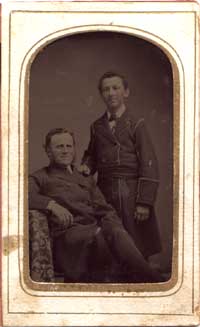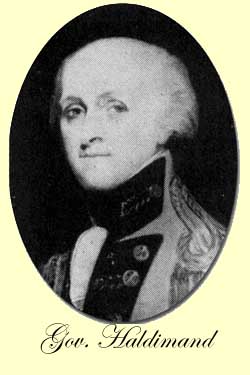|
Douglastown
"The Story Of Our Parish" (1775 - 1938) Written by Matilda Kennedy Submitted by Nancy Wright-Clapson The dawn of the Parish of Douglastown, 1775, Surveyor Douglas - Planning the village, the streets and the fences. Chapter
1 The parish of Douglastown was not named after any Douglas celebrated in story or song, but after an unassuming Scottish Land Surveyor of that name. History tells us that Douglas was sent by the English Government to plan out a village at the mouth of the little River St. John and at the entrance of Gaspé Basin. On a little height over-looking Gaspé Bay, he divided the land in lots of four acres, separated one from the other by straight streets. Much money was spent by the Government to establish on that spot. American Revolutionary Way had remained loyal to England. In spite of the help, or rather on account of the shortage of help and ill health, the Founder Douglas ruined himself in speculation and very few families remained descendants of the Irish inhabitants. |
|||
| Chapter 1: | Introduction. (1775-1938) |
|||
| Chapter 2: | Arrival
of the Loyalists. (1775-1846) |
|||
| Chapter 3: | Churches
and First Priests. (1846-1860) |
|||
| Chapter 4: | Erection
of our Parish. (1860-1867) |
|||
| Chapter 5: | Douglastown
via Rimouski (1867-1882) |
|||
| Chapter 6: | Father
Gillis and first Sisters... (1882-1907) |
|||
| Chapter 7: | ||||
| Appendix: | Notable people... | |||
| Post Office |
Mail services. (1796-1938) |
|||
|
|
|||
| A few Canadians and some French had come to join the little group of English. The first to figure in that small group is William Kennedy, United Empire Loyalist, who was a direct descendant of Irish Emigrants who came to America settling in Maryland, which was then and still remains a Catholic county. The father of William Kennedy was named John, came to America in 1680 A.D. He was a man of considerable means, owned a large tract of land and employed Negro help on his plantation. He died leaving one son, William, afore mentioned and his wife Mary Butler and of that issue, several sons and daughters who shall be mentioned later. Now comes the American Revolutionary War 1772, in which the English under King George the III were defeated, and when the Declaration of Independence was signed, those had remained loyal to Britain, their lands were confiscated and many thousands of them came to Canada - Ontario, Québec and New Brunswick. |  |
 |
In 1780, when the Loyalists came to Canada, General Haldimand was Governor and on the opposite side of the St. John River, (under his General ship and the Douglas Survey, it was planned to also build a town named Haldimand and bridge the River now called "the Little Bay" on one side, Douglastown, and on the other side, Haldimand. Many of the Loyalist descendants are now settled in Sandy Beach (and Haldimand, but in Douglastown, the only direct descendants are the Kennedys U.E.L.) The Plateau of Douglastown is shaped like a fan. Skirted on one side by the forest and facing the Bay of Gaspé. The streets are cut out through the village like a checkerboard and the houses are built here and there, without any symmetry (but in time it shall take on a more town-like appearance). Now, in 1938, time has marched on to the modern and up-to-date ways and opportunities of living and we enjoy all the modern and convenient ways of living. Rail-roads, autos, radios, telephones, bus system, electricity, moving pictures, daily mails, telegraphs; in fact, everything to keep us in touch with the outside world. From 1780 to 1938, note the progress. The Bay of Gaspé, opposite the village of Douglastown, plain to view and worthy of mention, figured conspeciously was the Great War 1914-1918. |
On September 28, 1914, on a fine bright afternoon, slowly one by one there appeared, coming sailing very slowly, the second Canadian Contingent, a flotilla of war ships accompanied by a convoy of English, sailed majestically up our Bay, one of the finest in the world. No ship too large not to float safely in the stream or channel called commonly so. Yes, sailed proudly on to await orders; carrying many thousand Canadian volunteers. From Generals to doctors to nurses and 1000 horses all to answer to the call of patriotism, and from Septemer 28th to October 3rd 1914, those 32 ships remained. On the morning of October 3rd, one by one as slowly as they came, they sailed away to the shores of destiny, carrying some of Canada's finest young men and maidens. Many of them from our shores, Gaspé and Douglastown. Yes! Sailed and passed from view dimly to be seen on the horizon, passed on into the Gulf of St. Lawrence and never returned over the same passage again. Gone to eternity.
 |